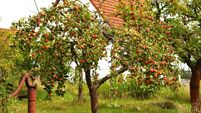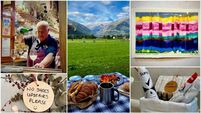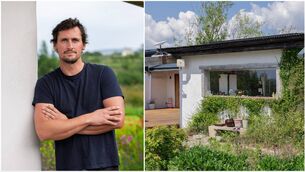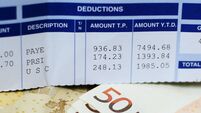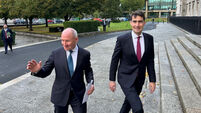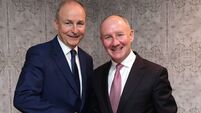Islands of Ireland: Dick's Island and link to Parnell's push
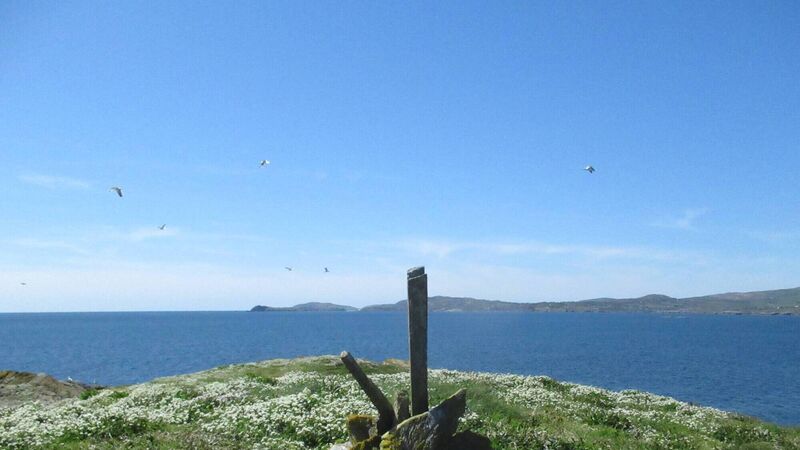
At first glance this seemingly inconsequential island in Toormore Harbour to the west of schull in West Cork is exactly that. From the shore, it appears as just another one of several islets or reefs that could not have attracted anything of any measure. Well, it did in fact.
In the major upheaval for the protection of tenants and the hand-in-glove agitation for independence in the final decade of the 19th century led by Charles Stewart Parnell, Dick’s Island was to play a significant role. The island hosted a major meeting of political leaders, tenant farmers and their supporters on this weather-beaten scrap of land.
Dick’s island is very small and measures only about 150m by 50m. It is pretty much devoid of vegetation save for some marram grass and sea thrift at its meagre summit. It has never been inhabited and there is no pier to offer safety to a passing boat. The only way to land on it is on a wide shelf of rock on its eastern side which is sheltered from the predominantly western surge of the sea.
reported in August 1890 that there took place there a ‘Great National Meeting near Schull’ and that amid speeches by MPs James Gilhooly and John Deasy that ‘police were baffled’. The newspaper stated that the meeting was held “within sight of a force of police yet without their presence”.
The Toormore area had been selected by the British government for coercive measures aimed at enforcing evictions for the non-payment of rents and other activities such as boycotting deemed to be illegal. The National League selected Dick’s Island as “the trysting place” for their meeting out of reach of the long arm of the law. wrote that on their approach to the mainland at the townland of Leamcon the police were met by a “bewildering sight”.
“On the island, half a mile out, a large crowd had already assembled, a flotilla of boats was conveying full cargoes of people from the mainland, to join the others, a long procession of whale boats, fishing boats, and galleys with sails filled, oars bent and colours flying, was sweeping down from Goleen and amid all rang out the deafening cheers of the people at the spectacle of the police being left on the shore lamenting.” On the island were Deasy and Gilhooly MPs and the parish priest Fr Forrest along with an assortment of solicitors, journalists, town representatives and some US interested observers. The newspaper reported that a crowd of 2,000 people attended, which is hard to fathom given the island’s size. Possibly this number included people on boats as well as parties on the mainland.
Forrest told the meeting that “if those who were misgoverning them thought they could destroy the independence of the people of Ireland and their patriotic spirit, they made an egregious mistake”.
“As long as their friends were incarcerated they would keep the national flag flying and they would keep it flying until every natural right which they demanded was granted.” On a motion from E Roycroft of the Schull Board of Guardians, the following resolution was passed amid great cheering: “That we condemn the brutal policy of the Tory Government in prosecuting coercion against a well-behaved and peaceable nation”.
Gilhooly encouraged the crowd to resist paying rents to their landlords and then “by a courageous and determined line of action that they could wrest from their landlords justice for themselves and their families”.
Gilhooly referenced the move by the British to employ gunboats in the forceful eviction of tenants from the Marmion tenants on nearby islands including Castle Island. Deasy declared that the people were “unconquerable”. When they got their own parliament “their country would be as peaceable as the little island on which they had now assembled”. Deasy concluded by extolling the virtue of Parnell who “made it possible to effect this mighty revolution”.
A year later Parnell had died and the Irish National League had split, but later regrouped with others to form the Irish Parliamentary Party.
One question remains though. Who is the eponymous Dick?
- How to get there: No ferry. Inquire at Schull pier.
- Other: Skibbereen Eagle, August 16, 1890; Charles Stewart Parnell; FSL Lyons, Fontana





